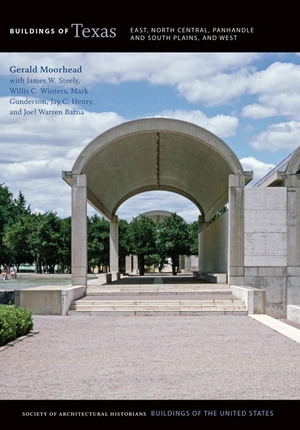
Dallas architect James Edward Flanders designed distinctive churches, usually for Methodist congregations, throughout North and East Texas. Typically, he stationed a tall tower at the corner. At this church he instead inserted a curved porch that spans towers of different heights. The taller tower is clad in metal shingles on its upper stages and has round corner buttresses that rise to pinnacles alongside the spire. The shorter tower, built of the same buff brick as the rest of the church, has a pyramidal cap that flares out to become a widely projecting eave, all signature Flanders features. Horizontal eaves and emphatic stringcourses reflect the influence of the Prairie School, even though some windows have pointed Gothic arches. Like most of Flanders’s Methodist churches, the building is based on the curved seating arrangement of the Akron Plan. A contiguous room could be opened onto the worship area if extra space was needed. This layout was changed with a remodeling in 1950, following the sale of the church to the African American St. Andrew’s United Methodist Church. The education building to the west was added in 1915.

